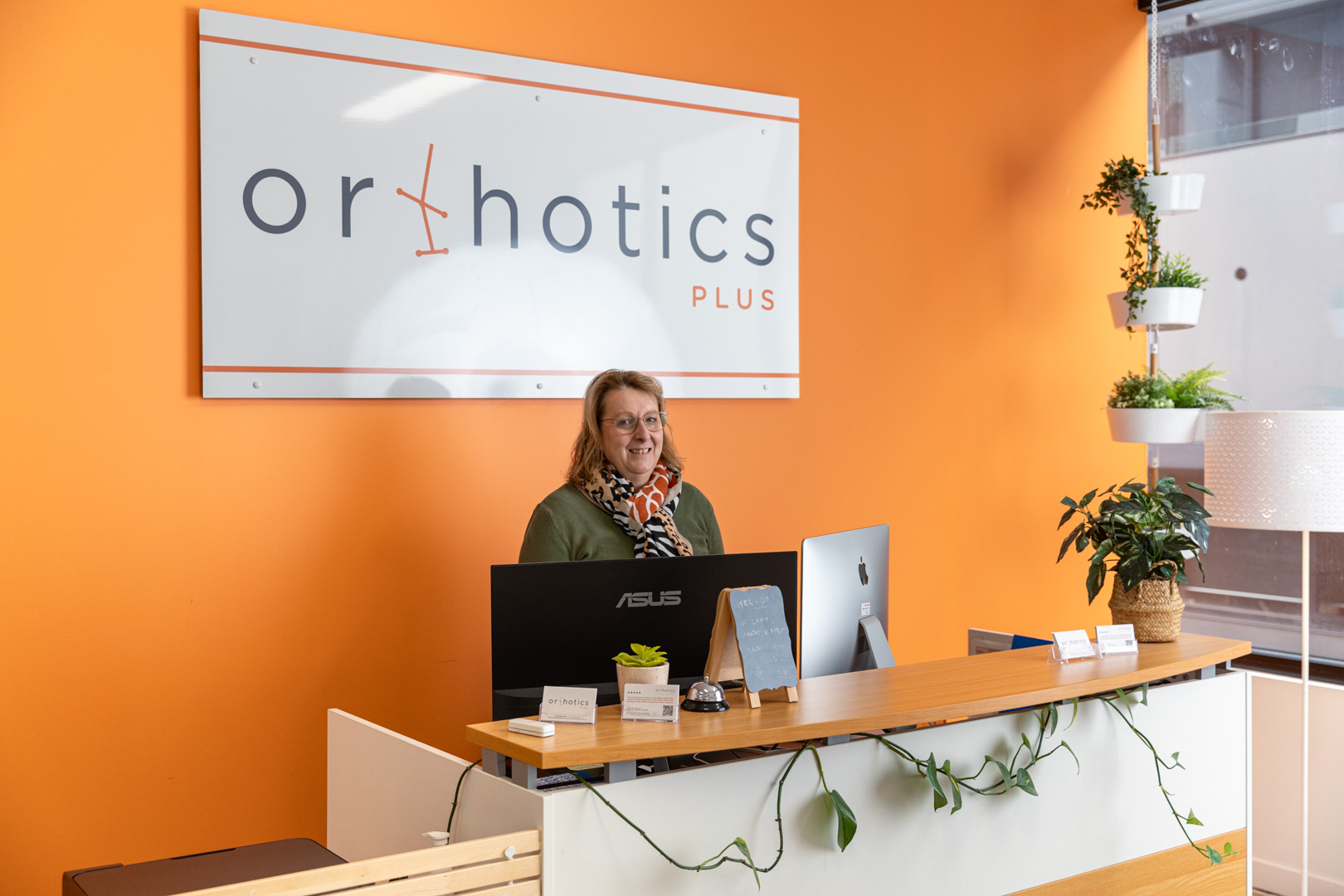Achilles Rupture Treatment at Orthotics Plus Melbourne
At Orthotics Plus, we commonly see patients with Achilles tendon ruptures or suspected Achilles tendon ruptures.
More often than not, these patients are referred to us by a specialist, physiotherapist, or general practitioner for further treatment. In these instances, our aim is to immobilise the patient’s foot and ankle in a plantarflexed position to prevent excessive tension on the Achilles tendon as it heals – whilst promoting a level of function.
We work with paediatric and adult patients throughout our multiple Melbourne clinics.
Explainer Video
What is an Achilles Tendon Rupture?
The Achilles tendon is a band that runs down the back of the ankle. It attaches the calf and soleus muscles to the foot and controls plantar flexion at the ankle (pointing your foot down). It assists with pushing off during walking or running.
A rupture is a partial or complete tear in the tendon. In most cases, tendon fibres will rupture in an area above the attachment point to the heel bone. In more severe cases, all the fibres can rupture and the tendon ends can separate. An Achilles can also rupture by pulling off some bone at its attachment point, we call this an avulsion fracture.
Most Achilles ruptures occur during sport, when a person forcefully plantarflexes against the ground to propel themselves forward or experiences an abnormal degree of dorsiflexion which overly stretches the tendon. An Achilles rupture can lead to significant pain. The patient will immediately experience a loss in mobility, with both a decreased capacity to push off or actively bend their foot upwards or downwards.

Treatment Services
There are several ways of managing an Achilles tendon rupture depending on the degree of the rupture and the gap between the two ends of the tendon.
Treatment options are best discussed with a specialist Foot & Ankle surgeon. Treatment options can be either surgical or conservative and will depend on the patient. Most evidence suggests outcomes are similar between surgical and conservative management.
Moon Boot
For most patients, a moon boot with a layered heel wedge is appropriate. The boots span from the toes to just below the knee. A short moon boot (toes to ankle) is typically not appropriate, as it does not control the movement of the ankle and puts too much stress on the achilles
We implement a heel wedge that shortens the distance between the ruptured ends of the Achilles tendon to allow healing
These boots allow us to gradually increase the stretch on the Achilles as it heals. There will likely be four layers of wedging. Adjustments are then made over time. Initially, the foot may be locked in with the toes pointing 30 degrees downwards, and then gradually be adjusted to reduce the degree of plantarflexion (toes pointing down).
Show more
A wedge is typically removed fortnightly to achieve a gradual stretch on the Achilles to coincide with rehabilitation and increase of function.
An alternative boot that can also be considered is a Vacoped boot. This is the only boot that has the capacity to not only lock the foot/ankle in a specific position but also allow movement within a limited range of motion as rehab progresses. This will allow the tendon to heal, but minimise the stiffness in the foot/ankle, which in turn should shorten the rehabilitation process. This is often the boot of choice for patients and specialists.
Show less
Fibreglass Cast
For other cases, a conservative treatment option using a fibreglass cast is appropriate. The foot will be cast in a relaxed equinus/plantarflexed position.
A fibreglass cast is typically considered at the discretion of the referring surgeon. The cast offers maximum protection for the Achilles tendon and restricts almost 100% of upward movement of the ankle.
The cast may be repositioned during treatment, depending on the referrer.
Diagnoses
Patients that have ruptured their Achilles during a traumatic injury may receive treatment from paramedics or be taken to the hospital.
Others may access a local GP, surgeon or Sports Doctor/Physiotherapist. Orthotics Plus also see patients suffering from the symptoms of an Achilles tendon rupture to receive a preliminary diagnosis.
If a rupture is suspected, we would refer them back to their general practitioner in order to perform an ultrasound and confirm the diagnosis. The ultrasound will approximate the location and degree of the tendon rupture.

Post Acute Management
Correctly rehabilitating your Achilles tendon injury is crucial. We strongly recommend working with an experienced physiotherapist, or other health professional during and after treatment to regain strength and reduce the risks of long term deficits.

Contact Orthotics Plus for Achilles Tendon Treatments
Orthotics Plus prioritises acute cases where possible.
- We have multiple clinics throughout Melbourne
- Same-day bookings are often available
- We have a history of working with referring hospitals and surgeons
- We stock TGA approved products to support rehabilitation of an achilles rupture
- We work with many of Melbourne’s leading foot and ankle specialists
Please use our referrals or clinic locations pages to get started.


